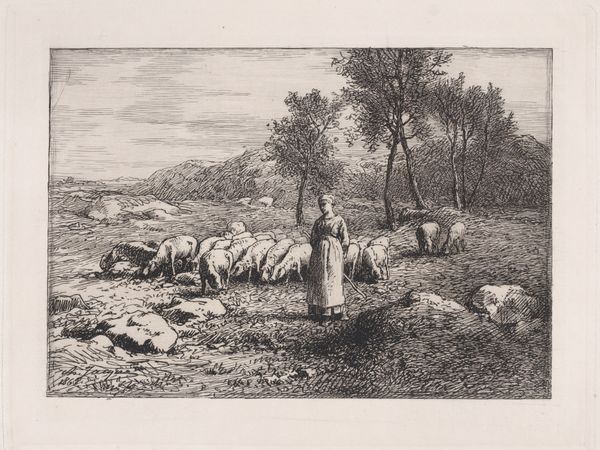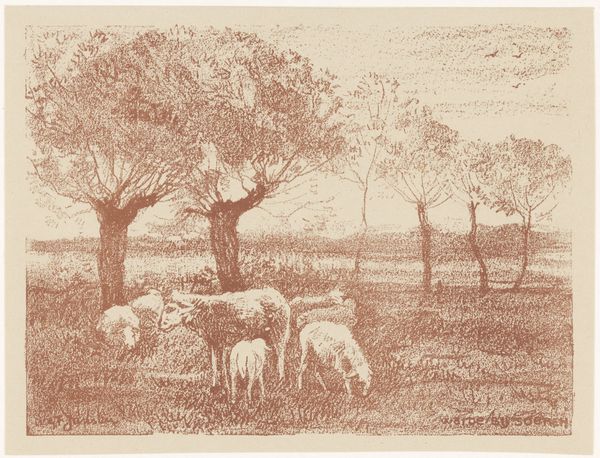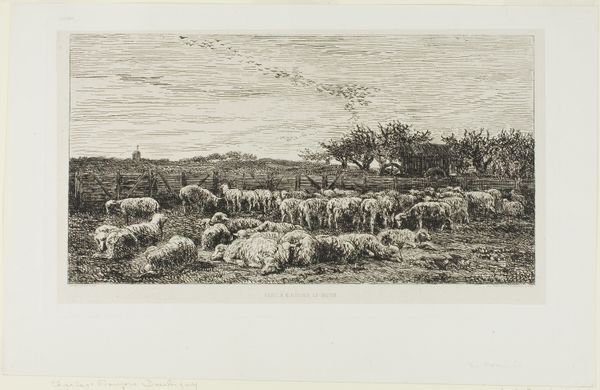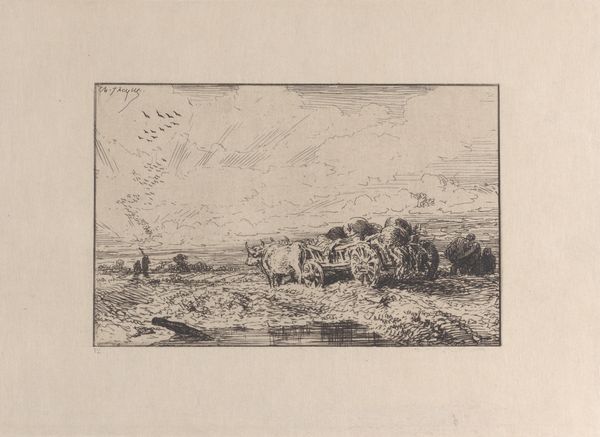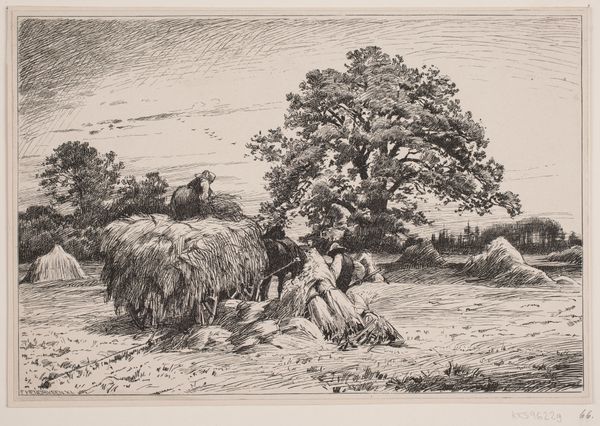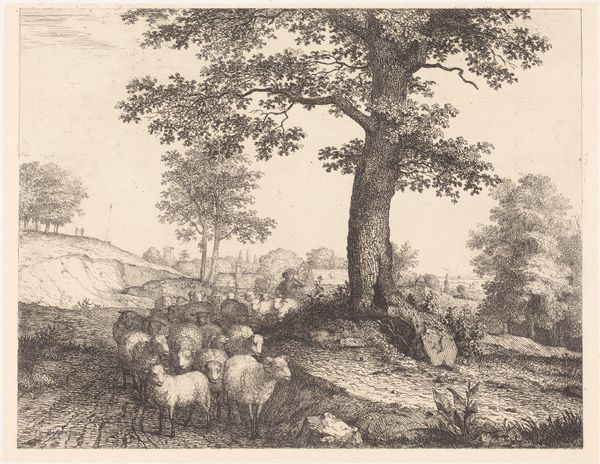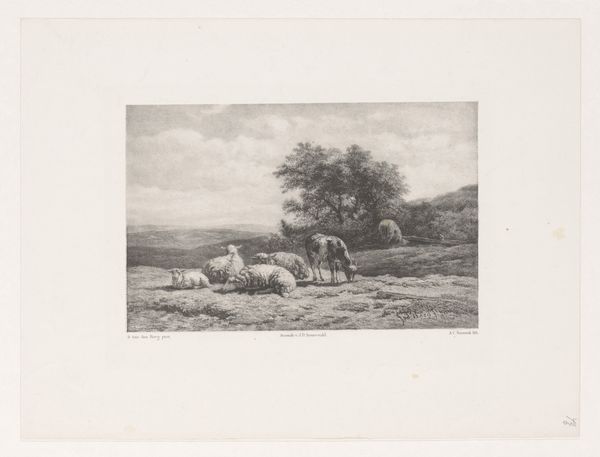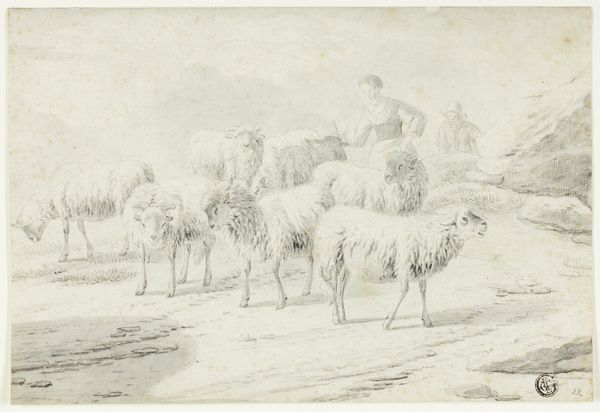
drawing, print, etching
#
drawing
# print
#
etching
#
landscape
#
romanticism
#
genre-painting
#
realism
Dimensions: Sheet: 11 1/4 × 15 3/8 in. (28.5 × 39 cm) Plate: 7 1/16 × 10 1/16 in. (18 × 25.5 cm)
Copyright: Public Domain
Curator: Oh, there’s something so poetic and almost bleak about this scene. Editor: Indeed. What you’re taking in is “The Truffle Hunter,” an 1845 etching by Charles Jacque. Curator: Ah, Jacque! It makes sense, given his fascination with rural life. It feels so solitary. Is it just me, or is there an unusual emptiness here? A sort of visual austerity? The composition leads my eye straight into the distance, where it fades away. Editor: Absolutely. Jacque has masterfully employed the etching technique to convey depth and texture. Look at how he uses line weight to distinguish between the foreground and the distant sky, giving depth and interest to this open landscape, it speaks to a Romantic sensibility, filtered through a Realist lens. Curator: Those swine are wonderful, like little, grubby clouds rolling across the terrain. It feels honest in its depiction. It makes you wonder what life was really like for that hunter. It's not just a pretty picture. Editor: And notice how the birds in flight add a layer of dynamic movement above what is fundamentally a very still, earthy scene. Curator: I see that the texture is wonderful in creating such a wide vista of what might otherwise have seemed a bleak landscape. Also, notice how each pig is individual. Editor: This particular etching is at the Metropolitan Museum of Art here in New York. The stark tonality emphasizes the quiet drama, doesn’t it? Curator: Yes! This isn’t about grandeur. It's intimate. The scene of the rural existence captured within the constraints of print. It does, though, inspire questions, especially about the solitary figure in the landscape. Editor: He’s definitely someone at home in his labor. Curator: "The Truffle Hunter" captures life's essence simply but elegantly. Jacque managed to translate a profound sense of place into a stark and memorable work using mere lines and subtle variations in tone. Editor: Exactly, seeing is one thing, understanding how the formal qualities produce the feeling takes time. Thank you for offering your creative and critical interpretation today!
Comments
No comments
Be the first to comment and join the conversation on the ultimate creative platform.
